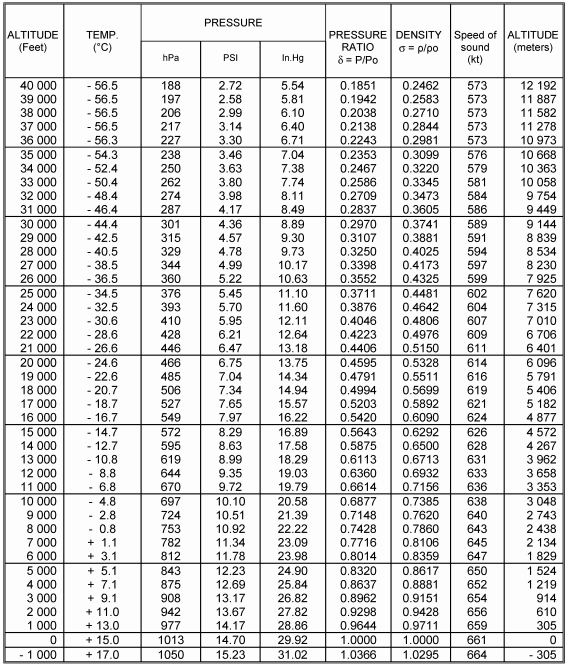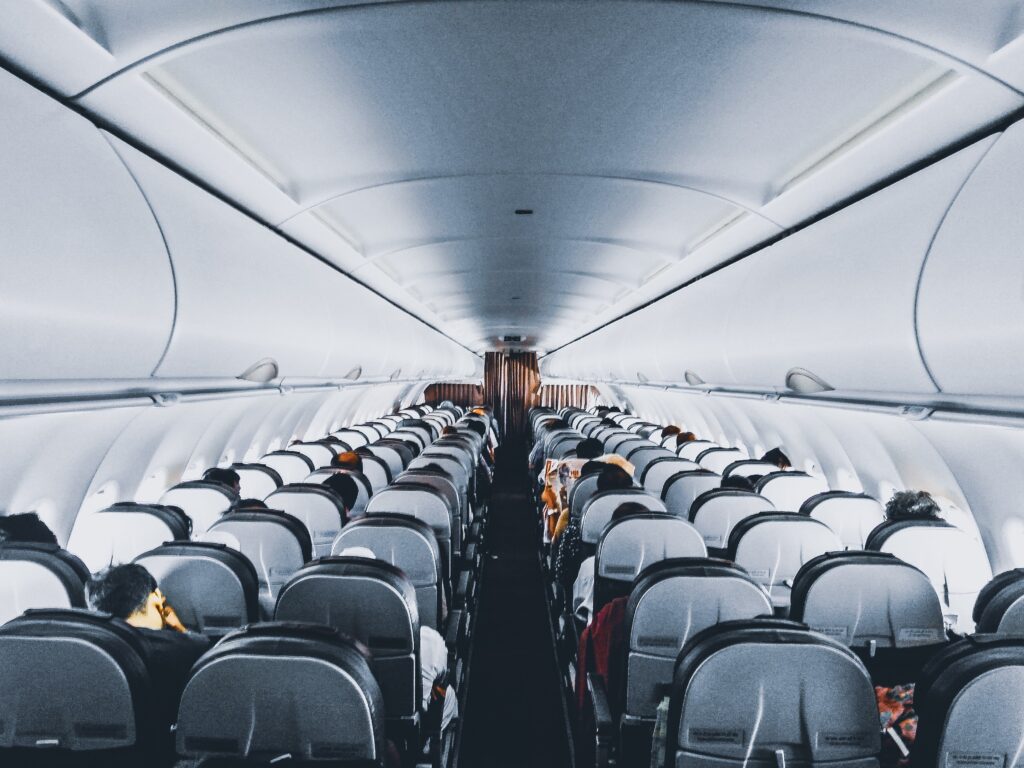Introduction
Have you ever felt cramped and claustrophobic in an aircraft? Have you ever wondered why the cabins never have enough headroom? The cross-section of an aircraft is normally circular to withstand pressure loads when the aircraft is pressurised and reduce drag. As such, the walkways are normally in the middle of the aircraft where you have the most headroom and the window seats have the least amount of headroom.
Airplanes have to fly at very high altitudes as it burns less fuel than it does at the same speed at a lower altitude. Thus increasing fuel efficiency and range. Additionally, most bad weather can be found at lower altitudes hence, instead of flying around an area with bad weather, airplanes simply fly over them. A commercial aircraft cruise altitude is anywhere in between 30,000 feet and 40,000 feet. Typically, the limit to how high an aircraft can fly is determined by the maximum allowable cabin differential pressure. Differential pressure is the pressure difference between the cabin and ambient pressure.

From the chart, we can see that the density and pressure of air decrease altitude increases. As a result, the oxygen content in the air is very low. The lack of oxygen at high altitude could result in altitude sickness, decompression sickness, hypoxia and even death. For humans, the maximum safe cabin altitude is 10,000 feet. However, the maximum cabin altitude set for all aircraft is 8000 feet (SKYbrary, 2012). Therefore, it is important to pressurise the cabin to maintain a comfortable environment for crew members and passengers.



Cabin pressurisation is a process where the air is pumped into the cabin. Cabin pressurisation is achieved due to the fuselage, front bulkhead and rear bulkhead which are airtight. A common misconception people have is that the entire aircraft is pressurised. However, in reality, only the fuselage section between the forward and aft bulkheads are pressurised. We call the pressurised section of the fuselage a pressure vessel. By definition, a pressure vessel is a container that is used to hold gases or liquids at a pressure higher or lower than the ambient pressure.

Normally, the area where the landing gears are stowed are not pressurised. Therefore, it is not a great idea to hang onto the landing gears in hope of a free flight.
Fact:
“between 1947 and 2015, the Federal Aviation Administration (FAA) has recorded 113 attempts to stowaway on 101 flights (in some cases, people stowaway together) originating from or landing in the United States. Of those 113 attempts, only 27 people have survived”
Vice – The Science of Stowing Away in an Airplane (vice.com)
How Planes Are Pressurised
An airplane fuselage is like a bottle. You can close the cap and increase in altitude. The pressure inside the bottle would remain the same. The issue with the bottle theory is that in commercial flights, humans use up the oxygen and convert it into carbon dioxide. Eventually, you will run out of oxygen and die. Therefore, there needs to be a constant flow of fresh and clean air being pumped into the cabin.
Fact:
On average, all the air in a commercial aircraft is replaced every 2-3 minutes

The pressurisation system controls the cabin altitude by regulating the amount of air that is released from the cabin using outflow valves. The inlet is where a constant flow of fresh clean air is pumped into the cabin and the outlet is where the air is released into the surrounding. By closing the valve, the internal pressure in the cabin will increase and the cabin altitude will decrease. Opening the valve will result in the opposite effect. If the valve is maintained at a certain position, the cabin pressure and altitude can be maintained. The outflow valves can be found towards the aft of the aircraft either mounted below or to the side of the fuselage and are controlled by the aircraft’s pressurisation system. The outflow valve opens and closes during different stages of the flight such as cruising, descending and climbing.

The aircraft air conditioning and pressurisation systems rely on the bleed air system for the supply of air. The pressurisation system and air-conditioning system is categorised under the environmental control system (ECS) as they are interconnected. The same air that is used to pressurise the cabin is conditioned to the desired temperature.
The pressurised air is obtained from the bleed air flowing through the compressor section of the turbine engine. This bleed air is used to provide pressurised and conditioned air to the cabin. As air flows through the turbine engine, the temperature and pressure of the air is increased as it is compressed by the compressor. Therefore, the pressurised air will need to be cooled through heat exchangers. The air-conditioning unit will ensure that the pressurised air that is released to the cabin is at the temperature selected by the pilot. This pressurised and conditioned air is then released through the air conditioning ports you see above your seats.
Safety Features
All aircraft are designed with high levels of safety in mind. To ensure that the pressure differential does not exceed the maximum limit, safety devices are incorporated into the fuselage and pressurisation systems. Without these safety devices, the aircraft would sustain structural failure. The safety devices operate automatically and mechanically without any intervention required. The pressurisation system consists of 3 safety valves: positive pressure relief valve, negative pressure relief valve and dump valve.
Fact:
An aircraft fuselage is designed to withstand mainly large positive differential pressure but very limited negative differential pressure.
Positive Pressure Relief Valve

The positive pressure relief valve prevents the cabin from being over pressurised. When the differential pressure exceeds the maximum allowable limit, the positive pressure relief valve would open to release the additional pressure from the cabin and into the atmosphere. The relief valve would close when the differential pressure is within the limit.
Negative Pressure Relief Valve

The negative pressure relief valve is similar to the positive pressure relief valve but functions in the opposite way. If the ambient pressure is larger than the pressure in the cabin, there are negative pressure relief valves that open and allow ambient air to enter the cabin. This may occur during rapid descent or emergency descent. The positive and negative relief valves are spring-loaded and do not require intervention from any systems or crew members.
Dump Valve
As the name suggests, a dump valve is used to dump or release all cabin pressurisation when the aircraft lands. It is used to equalise the cabin pressure and ambient pressure. In an emergency, the crew may operate the dump valve to reduce the cabin pressure manually.
Fact:
It is impossible to open a door when the aircraft is pressurised. The cabin pressure seals them shut. Unlike car doors where the doors close externally and rest against the frame of the car from the outside, an aircraft door rests against the frame of the fuselage from the inside. When the pressure in the cabin is higher the ambient pressure, it is virtually impossible to open the door.
Read more about it here – Physics explains why you can never open a plane door mid-flight | WIRED UK
Why Cabin Pressurisation is Important
As mentioned previously, at high altitudes, the air is much thinner. There is lesser oxygen content in the air. As a result, there can be very serious consequences when flying at very high altitudes. The most common and serious of which is hypoxia. Hypoxia is a condition where there is a lack of oxygen in the blood, cells or tissues which causes impairment of body functions. The serious effects of hypoxia only arise at altitudes above 10,000 feet (M.P. Samuels, 2004)
Some of the mild symptoms of hypoxia include shortness of breath, tunnel vision, increase in heart rate and rapid breathing (ATSB, 2008). This is the way the body is trying to compensate for the lack of oxygen. The serious effects of hypoxia are the inability to focus, impaired decision-making, psychomotor skills, loss of consciousness and even death (ATSB, 2008). During an experiment carried out by the U.S Federal Aviation Administration (FAA) in 1997 on the effects of mild hypoxia on pilot performance, it was found that hypoxia impacted pilot performance which lead to an increase in the number of errors performed by them.
Case Study – Cabin Depressurisation, Helios Flight 522 (The ‘ghost plane’, ‘flying tomb’)

Cabin depressurisation occurs when there is a leak that causes the cabin to lose its pressure to ambient air. On August 14, 2005, Helios Airways Flight 522 carrying 115 passengers and 6 crews crashed into a mountain in Greece (AAIASB, 2006). The flight was scheduled to depart from Larnaca Cyprus for Prague, Czech Republic. During the investigation, the Air Accident Investigation & Aviation Safety Board (AAIASB) found that the loss of cabin pressurisation resulted in the depletion of oxygen which incapacitated the crew (AAIASB, 2006). The aircraft continued to fly on autopilot until it eventually ran out of fuel and crashed. All 121 passengers and crew succumbed to hypoxia during the flight before eventually crashing.
Conclusion
The pressurisation system is simple but it is one of the most important systems onboard an aircraft. Despite the serious consequences of depressurisation, passengers should not panic during such events. In the event depressurisation occurs, an aural and visual alert will be triggered in the cockpit. The oxygen masks will also automatically drop without pilot intervention. Though, the pilot can also manually deploy the oxygen mask if deemed necessary. Pilots are also trained to spot the symptoms of hypoxia in the event the alert is not triggered in the cockpit. After which the pilot would carry out the safety checklist and would carry out an emergency descent to about 10,000 feet if they are not able to resolve the depressurisation issue. This is the altitude where you can breathe without the need for oxygen masks.

At very high altitudes, you only have a few seconds before you lose your cognitive ability. It is also the reason why you should don your masks first as soon as the masks drop from the top compartment before helping others. So the next time you take a flight, pay attention to the safety instructions.
References
Air Accident Investigation & Safety Board (AAIASB). (2006). Aircraft Accident Report on The Helios Airways Flight HCY522. https://reports.aviation-safety.net/2005/20050814-0_B733_5B-DBY.pdf
Australian Transport Safety Bureau. (2009). Aircraft Depressurisation – Cabin Crew Information Bulletin. In Skybrary. https://www.skybrary.aero/bookshelf/books/957.pdf
Cavcar, M. (n.d.). The International Standard Atmosphere (ISA). http://fisicaatmo.at.fcen.uba.ar/practicas/ISAweb.pdf
Federal Aviation Administration. (2003). Operations Of Aircraft At Altitudes Above 25,000 Feet MSL And/Or Mach Numbers (MMO) Greater Than .75. https://www.faa.gov/pilots/training/airman_education/media/AC%2061-107A.pdf
Nesthus, T., Rush, L., & Wreggit, S. (1997). Effects of Mild Hypoxia on Pilot Performances at General Aviation Altitudes. In Federal Aviation Administration. https://www.faa.gov/data_research/research/med_humanfacs/oamtechreports/1990s/media/AM97-09.pdf
Samuels, M. P. (2003). The effects of flight and altitude. Archives of Disease in Childhood, 89(5),. https://doi.org/10.1136/adc.2003.031708







